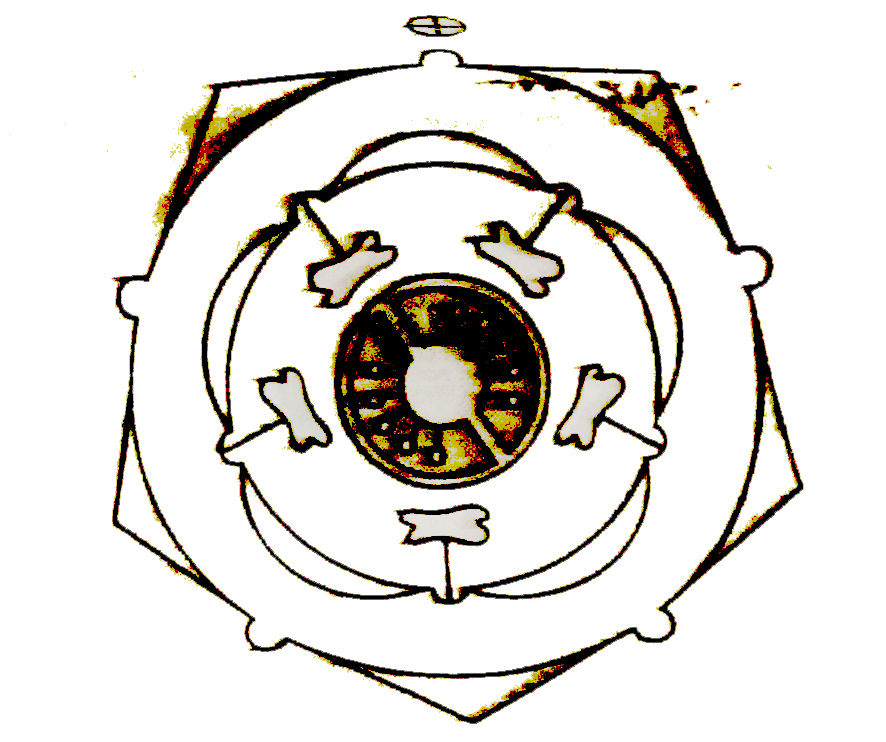Draw the floral diagram of Allium cepa.
Step-by-Step Solution for Drawing the Floral Diagram of Allium cepa (Onion)
1. Understand the Components: Before drawing, familiarize yourself with the components of the flower. Allium cepa has several key parts: bracts, perianth (which includes sepals and petals), androecium (male reproductive parts), and gynoecium (female reproductive parts).
2. Draw the Bracts: Start by drawing the bracts at the base of the flower. These are funnel-shaped structures that support the flower parts above them. They can be represented as two small, leaf-like structures at the bottom of your diagram.
3. Indicate Actinomorphic Nature: Use a plus sign (+) to indicate that the flower is actinomorphic, meaning it can be divided into symmetrical halves through multiple planes.
4. Draw the Perianth: Next, draw the perianth, which consists of two whorls of tepals (petals and sepals that are not differentiated). Draw three outer tepals (sepals) in one layer and three inner tepals (petals) in another layer, both arranged in a circular pattern.
5. Add Androecium: Above the perianth, draw the androecium, which consists of six stamens (male reproductive parts). These should also be arranged in two whorls of three, and you can represent them with lines or small circles to indicate the anthers.
6. Draw the Gynoecium: In the center of the flower, draw the gynoecium, which consists of the ovary, style, and stigma. The ovary should be represented as a rounded structure with three chambers (indicating the three carpels). Above the ovary, draw the style leading to the stigma.
7. Label the Parts: Clearly label each part of the flower diagram: Bracts, Perianth (with outer and inner labeled), Androecium, and Gynoecium.
8. Indicate the Superior Ovary: Use a dash below the gynoecium to indicate that the ovary is superior, meaning it is positioned above the attachment of the other floral parts.
9. Finalize the Diagram: Review your diagram for accuracy, ensuring that all parts are correctly represented and labeled.
Floral Formula
- Write the floral formula alongside your diagram:
- EBR + * (actinomorphic)
- Bisexual flower
- P (Perianth) = 3 + 3
- A (Androecium) = 3 + 3
- G (Gynoecium) = 3 (superior ovary)
- Write the floral formula alongside your diagram:
- EBR + * (actinomorphic)
- Bisexual flower
- P (Perianth) = 3 + 3
- A (Androecium) = 3 + 3
- G (Gynoecium) = 3 (superior ovary)
Topper's Solved these Questions
- MORPHOLOGY OF FLOWERING PLANTS BOOK - MODERN PUBLICATIONCHAPTER - MORPHOLOGY OF FLOWERING PLANTS EXERCISE - Chapter Practice Test (Section-A)
6 Videos
- MORPHOLOGY OF FLOWERING PLANTS BOOK - MODERN PUBLICATIONCHAPTER - MORPHOLOGY OF FLOWERING PLANTS EXERCISE - Chapter Practice Test (Section-B)
5 Videos
- MORPHOLOGY OF FLOWERING PLANTS BOOK - MODERN PUBLICATIONCHAPTER - MORPHOLOGY OF FLOWERING PLANTS EXERCISE - COMPETITION FILE ( OBJECTIVE TYPE QUESTIONS (Multiple Choice Questions (MCQs):))
1 Videos
- MINERAL NUTRITION BOOK - MODERN PUBLICATIONCHAPTER - MINERAL NUTRITION EXERCISE - CHAPTER PRACTICE TEST
16 Videos
- NEURAL CONTROL AND COORDINATIONBOOK - MODERN PUBLICATIONCHAPTER - NEURAL CONTROL AND COORDINATIONEXERCISE - Chapter Practice Test
11 Videos
Similar Questions
Knowledge Check
Recognize the floral diagram.

To which plant this floral diagram belongsAAsparagusBIndigoferaCMulaithiDDaturaRecognize the floral diagram :

To which plant this floral diagram belongsAAsparagusBIndigofareCMulaithiDDatura
Given below is the floral diagram of flower which of the following description of the flower match the floral diagram ?

View SolutionDraw a labelled diagram of human heart.
View SolutionDraw a labeled diagram of sperm.
View SolutionDraw a labelled diagram of eye .
View SolutionDraw diagram of bcc unit cell.
View SolutionDraw a well labelled diagram of ovum.
View Solution
